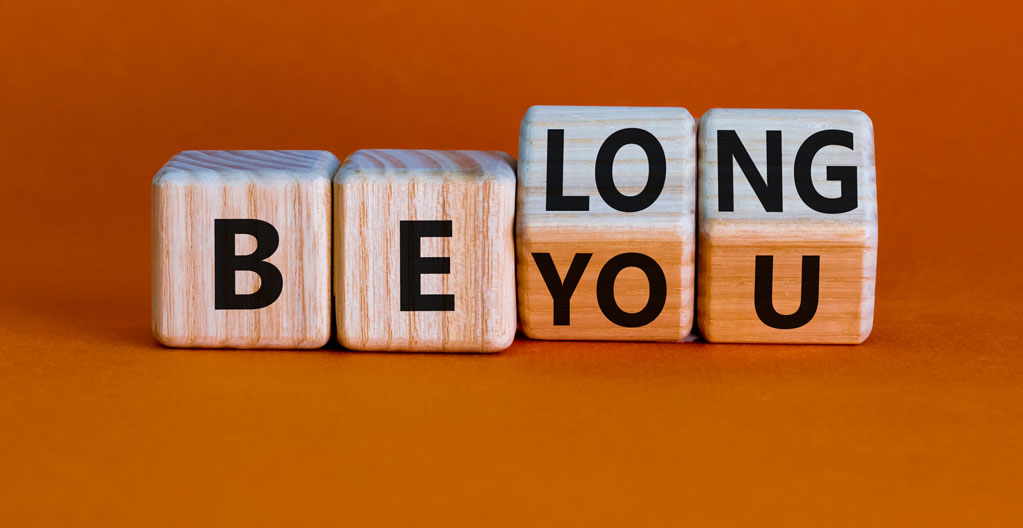“We all belong to each other. – Mother Teresa”

Belonging is one of those warm, fuzzy words that makes you feel like you’re wrapped in your grandmother’s quilt on a cold winter night. It’s the feeling of showing up at a cookout and knowing you don’t have to introduce yourself because someone’s already handing you a plate. It’s hearing your name called with genuine excitement when you walk into a room. It’s feeling at home—not just in your house, but in your community, in your workplace, in the world.
But let’s be real. We live in a world that sometimes feels more like an exclusive club with an invisible bouncer at the door, checking credentials, deciding who gets in and who has to stand outside in the rain. We divide ourselves based on race, class, politics, fraternities and sororities, favorite sports teams, and whether or not pineapple belongs on pizza (a debate that has destroyed friendships) or whether you put salt or sugar on grits. Of course, salt—everyone knows that! (Just kidding… or am I?) But beyond these surface-level divisions, the real question remains—can we truly build a world where we all belong?
The Need for Belonging
Brené Brown reminds us that “true belonging doesn’t require you to change who you are; it requires you to be who you are.” She contrasts belonging with fitting in, emphasizing that fitting in often means conforming, while belonging means being accepted as our authentic selves. This distinction is crucial because many of us spend so much time trying to fit in that we forget the power of real belonging.
Psychologists tell us that belonging is a fundamental human need, right up there with food and shelter. We are wired to connect, to seek community, to find our people. Yet, in a world that seems more divided than ever, that sense of belonging can feel elusive.
I remember my first day at a new school. My mother, ever the optimist, told me, “Just be yourself, and you’ll make friends in no time.” That advice sounded great in theory. In practice, I sat alone at lunch, clutching my peanut butter and jelly sandwich like it was my last friend on earth. But then, out of nowhere, a kid sat next to me and said, “Are you a Cubs or Sox fan?” That was it. That was the invitation. I responded, “Cubs,” and just like that, I had a friend. Sometimes, belonging starts with a simple question.
Barriers to Belonging
The truth is, belonging is easy when you’re around people who think, talk, and act like you. It gets trickier when differences enter the mix. We all carry biases, assumptions, and fears that keep us from truly embracing others. I once attended a fancy gala where I felt completely out of place. Everyone around me was discussing things like “investment portfolios” and “market trends,” while I was just wondering when they were going to serve the vegan entrée. But then, I overheard someone mention their love for old-school hip-hop. That was my moment. I jumped in, and suddenly, the barriers came down. We found common ground.
Belonging isn’t about making everyone the same—it’s about making space for people to be who they are. It’s about asking, “What do we have in common?” instead of “Why are we different?”
As a former teacher, my goal was always to create an environment where everyone felt like they belong. I hope I succeeded. Will I ever know? Whether in the classroom or in life, people thrive when they feel seen, heard, and valued.
When I’m asked to speak at schools, before starting the work, I usually ask school leaders, “How do you keep your staff and students safe?” I’ve spoken at hundreds of schools, and no one seems to get it right. They usually focus on physical space, and yes, that is important, but what about emotional safety and belonging? This is just as crucial. A safe school is more than just locked doors and security cameras—it’s a place where students and staff feel comfortable being themselves, where they know they are valued, and where they trust that their voices matter.
Building a Culture of Belonging
So, how do we actually build a world where we all belong? Here are a few simple (but powerful) steps:
Listen First – Too often, we wait for our turn to speak instead of really hearing what someone is saying. Belonging starts with listening.
Create Courageous Spaces – Whether it’s a classroom, a workplace, or a friend group, people need to know they can show up as their true selves without fear of judgment.
Celebrate Differences – Instead of being afraid of what makes us unique, we should lean into it. After all, life would be pretty boring if we were all the same.
Extend the Invitation – Sometimes, all it takes to make someone feel like they belong is to pull up a chair and say, “Come sit with us.” Say Sawubona (I see you!)
A World Where We All Belong
The world we live in isn’t perfect. But I truly believe we can create pockets of belonging wherever we go. It starts small—with a kind word, an open seat, a willingness to understand. If we all committed to making just one person feel like they belong every day, imagine how different the world could be.
So, let’s start now.
Reflection Questions:
- When was a time you felt like you truly belonged? What made that experience special?
2. Have you ever witnessed someone feeling left out? What could you have done to help them feel included?
3. What small action can you take today to create a sense of belonging for someone else?

